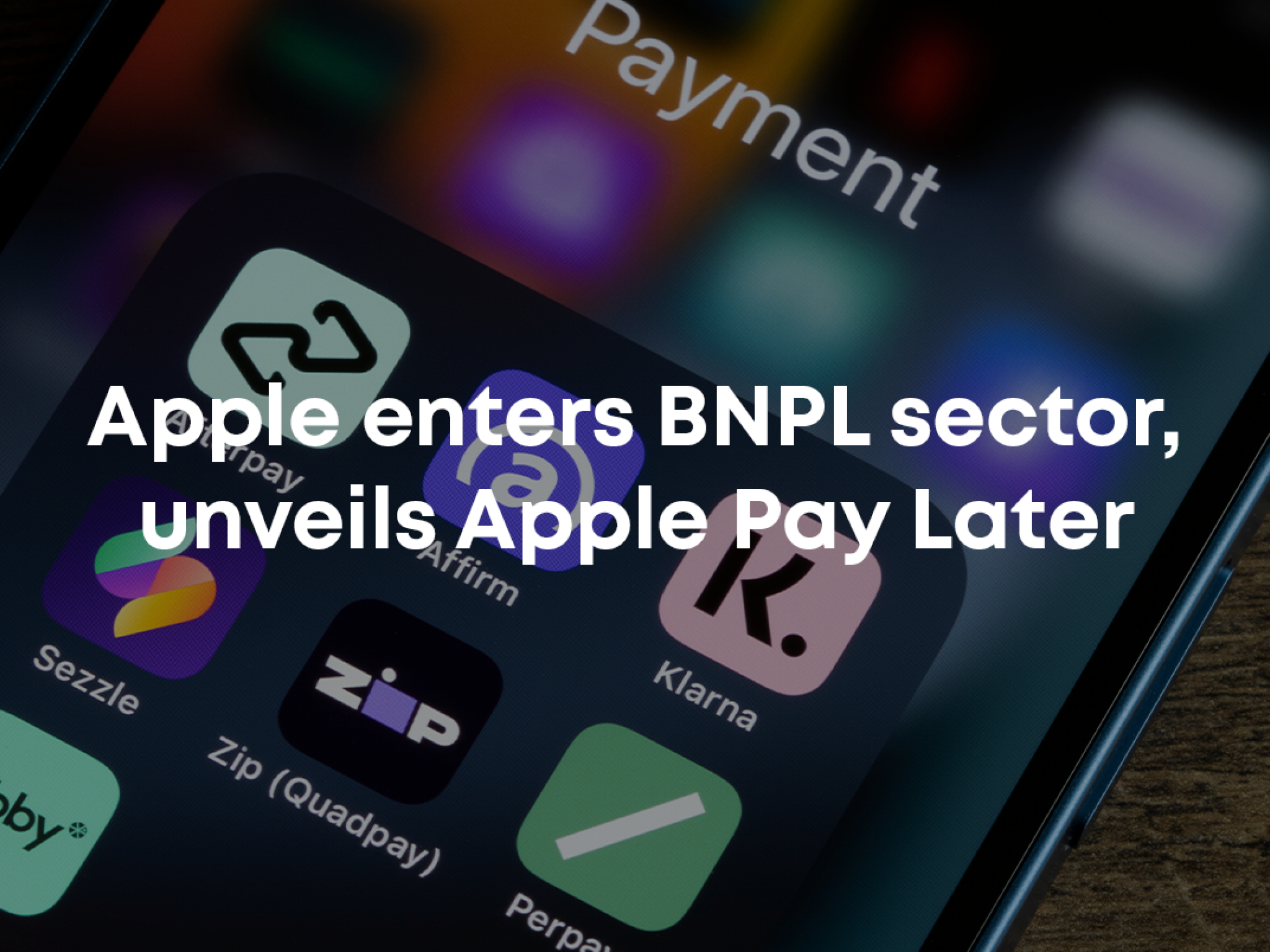
Apple Inc. (NASDAQ:AAPL) is planning to offer buy now, pay later (BNPL) services in the US despite concerns of a potential market squeeze as more providers have a crack at the sector amid growing consumer borrowing and spending.
Apple intends to launch its BNPL offering later in 2022 through its Apple Pay mobile payment and digital wallet service. To be called Apple Pay Later, the offering will have the tech giant underwrite loans and provide funds for users, as well as absorb any losses that may be incurred whenever borrowers miss their repayment obligations.
Apple's BNPL comes at a time when the shares of fintech companies providing similar services have underperformed due to various concerns with the payment scheme. Some names that have underperformed S&P 500 financials recently are Affirm Holdings (NASDAQ:AFRM), Australia’s Zip Co. (ASX:ZIP), PayPal (NASDAQ:PYPL) and Block Inc. (NYSE:SQ), which acquired Afterpay.
These names are making up a shrinking portion of the BNPL playing field, as more players enter the game, there are also concerns about further market share and pricing squeezes. Furthermore, there are other unique risks associated with the service — credit-linked fears that have never been tested during a downturn.
Amid all concerns, Apple obtained lending licenses through a subsidiary in most states across the country, giving it the go-ahead to offer Apple Pay Later.
Competition heating up
Around this time in 2021, 14 companies have already launched BNPL services in the US. The country was leading the world in terms of BNPL providers, followed by Europe. The appeal of the service has also infiltrated other markets, with growth observed in Australia, New Zealand, India and other parts of Asia.
The sector is exhibiting no signs of slowing down despite all the risks associated with it.
With plenty of established players already in the game, however, there seems to be limited space for fresh entrants — even when it is a big name like Apple.
In the US, most of the market is divided between Klarna, Afterpay and Affirm, leaving other players to compete over around a quarter of the market. These three, plus PayPal, generated combined revenue of more than $3.2 billion in 2021.
"The market for BNPL is maturing, and unless a new player has a differentiated approach and can offer additional services to both consumers and merchants, it will be tough for new entrants," said Melissa Guzy, co-founder and managing partner at fintech-focused venture capital firm Arbor Ventures.
The good thing for Apple is that it is not entirely new in the game. In 2021, it had a partnership with market leader Affirm. The partnership, which launched in Canada, allowed users of Affirm's PayBright to purchase Apple devices over a 12- or 24-month period.
"What is clear today is that a new entrant will need a significant amount of capital from the start for marketing and winning a position on the checkout page," Guzy noted.
Some other relatively new players in the BNPL playing field are financial heavyweight Mastercard and card network Visa. Within existing players, there was also a spate of consolidations including PayPal's $2.7 billion purchase of Japan-based BNPL platform Paidy and the former Square Inc.'s $29 billion acquisition of Afterpay.
What of banks?
With all the attention on the BNPL sector, one is left to wonder how traditional lenders play into this evolution of payment services. Well, they are not to be left behind, with many launching their own BNPL services especially as along with the growth of the sector is the shrinking of credit card volumes.
Banks are keen to tap into the market and with mobile apps already in place, they are eager to capitalize on the client base they already have. And why wouldn't they, right? According to Insider Intelligence, the BNPL offering will account for $680 billion of transaction volume worldwide by 2025.
While participation in the sector is quickly becoming a necessity for lenders that are in danger of losing customers to these alternative forms of financing, it is still best that they go about it in smart and strategic ways.
Some lenders, such as Australia's Westpac Banking Corp. (ASX:WBC) teamed up with existing BNPL service providers to get a feel of the sector. Meanwhile, others are coming up with differentiated offers they believe will appeal to customers such as the Royal Bank of Canada and its PayPlan offering in partnership with digital payments company Bread. In the US, Barclays partnered with Amount to offer merchants point of sale (POS) financing under the merchant's own brand.
Regardless of how they choose to do so, banks will certainly not miss out on the chance of riding the growing popularity of BNPL. They could not ignore the continuous growth of this payment scheme and rather than resist it, the best play for traditional lenders is to find new avenues where they can stamp their brand and continue to evolve with ever-changing technologies and customer behaviors.






